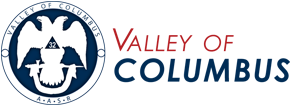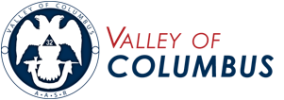 Scottish Rite is one of the two branches of Freemasonry in which a Master Mason (Third Degree) may proceed after he has completed the three degrees of Symbolic or Blue Lodge Masonry. The other branch is known as York Rite consisting of Capitular and Cryptic Masons and Knights Templar.
Scottish Rite is one of the two branches of Freemasonry in which a Master Mason (Third Degree) may proceed after he has completed the three degrees of Symbolic or Blue Lodge Masonry. The other branch is known as York Rite consisting of Capitular and Cryptic Masons and Knights Templar.Scottish Rite includes the Degrees from the Fourth to the Thirty-third, inclusive. The moral teachings and philosophy of Scottish Rite are an elaboration of the basic Masonic principles found in Blue Lodge or Symbolic Freemasonry. Sometimes likened to a “College of Freemasonry,” Scottish Rite uses extensive drama and allegory to emphasize the content and message of its degrees.
Where did Scottish Rite originate?
Masonic historians throughout the world still seek the positive answer to this question. The use of the word “Scottish” has led many Masons to believe that the Rite originated in Scotland and that Scotland remains the fountainhead of its activity. Such is not the case.
Actually, the first reference to the Rite appears in old French records where the word “Ecossais” (meaning Scottish) is to be found. During the latter part of the Seventeenth Century, when the British Isles were torn by strife, many Scots fled to France and resumed their Masonic interests in that country. It is felt that this influence contributed to the use of the word “Scottish”.
The earliest documented records trace the actual beginnings of the Rite to Bordeaux, France, about the middle of the Eighteenth Century. From there, it was carried to French possessions in the West Indies and thence to the United States. The first Supreme council was established in Charleston, South Carolina, in 1801, and all other regular Supreme Councils throughout the world are descended from it. It is of interest to note that the Supreme Council for Scotland did not come into existence until 1846 and thus does not hold any priority which would call for the work of the Rite to be performed in that country.
When did Scottish Rite commence in this country?
Antecedents of Scottish Rite existed in Albany, New York, as early as 1767. The first Supreme Council was organized at Charleston, S. C., in 1801, to cover the United States. In 1813, the Northern Supreme Council came into being as the United States expanded and as an offshoot of the Charleston group, so there are now two Supreme Councils in he United States. Ours is the Supreme Council for the Northern Masonic Jurisdiction with headquarters in Boston (Lexington), Mass., and covering 15 northeastern, middle Atlantic and Midwestern states. The other is the Supreme Council for the Southern Jurisdiction with headquarters at Washington, D. C., and covering the remaining 35 states, the District of Columbus, and U.S. territories and possessions.
How long has Scottish Rite been an international organization?
Since its now officially-recognized beginning in 1801 in Charleston, Scottish Rite has spread throughout the globe. In several countries, particularly in Latin America, Scottish Rite was the pioneer Masonic organization with Symbolic or Blue Lodge Freemasonry being organized afterwards. The Rite was carried to the new world by French and Spanish members; to India, the Far East, and Africa by English, Irish and Scotch members; to Indonesia by Dutch members, and so on.
Scottish Rite of the Northern Jurisdiction enjoys official and friendly relations with its counterparts in the following countries:
Argentina
Austria
Australia
Belgium
Bolivia
Brazil
Canada
Central America
( Guatemala )
Chile
Colombia
Costa Rica
Cuba
Denmark
Dominican
Republic
Ecuador
El Salvador
England
Finland
France
Germany
Greece
Honduras
Iceland
Ireland
Iran
Israel
Italy
Luxembourg
Mexico
Netherlands
Nicaragua
Norway
Panama
Paraguay
Peru
Philippines
Spain
Scotland
Sweden
Switzerland
Turkey
U.S.A.
(Southern Jurisdiction )
Uruguay
Venezuela


